|
A guided tour around the historic building which houses the Xàbia "Soler Blasco" Museum on Wednesday 21 November at 19.00 hours
Xàbia's museum is housed in a 17th Century mansion which itself has a fascinating 400 year old history.. AMUX members and friends can enjoy a guided tour of this building and learn about its historic features and something of the people who once lived there. The tour - with guides speaking in Valenciano, Castillian and English - starts at the Museum at 19.00 hours. The tour should last approximately one hour.
0 Comments
Written in Valenciano by Isabel Català Arbona ( 10 years old) Primary 6, Graüll College, Xàbia . Isabel has written a concise and easy to understand account - complete with pictures Congratulations Isabel !
See our Blog in Valenciano 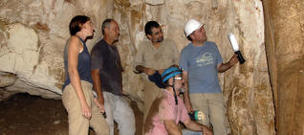 On Wednesday 7th November a story of an important archaeological find hit the regional press. AMUX members were pleased to see that Xàbia's Municipal archaeologist and President of AMUX was a member of the discovery team. An English version of the press release is printed below: Source: http://www.levante-emv.com/comarcas/2012/11/07/hallan-pinturas-grabados-20000-anos-cueva-pedreguer/950038.html __________________________________________________________________________________________
La Cova del Comte, in Pedreguer, is hiding a treasure in her depths that may become one of the jewels of the prehistoric cultural heritage of the Mediterranean. That, at least, is the assertion of a group of five expert archaeologists, who in recent months have conducted a preliminary study sponsored by the Foundation Cirne of Xabia, a foundation dedicated to research and the dissemination of heritage. The "treasure" is in the interior of a large gallery which is accessible only by crawling for about 30 metres through a crack in the rock from the first chamber. Archaeological remains have been found as well as several examples of Paleolithic art made between 16.000 and 18,000 years before the current era. Among these are paintings. The relevance of the discovery inside the cave lies in several factors. Firstly "the existence of cave paintings inside dark cavities," is something without precedent in the Mediterranean, since Levantine rock art is always found in shelters open to the outside, according to archaeologist Juan de Dios Boronat. "We are not talking about a case of Levantine rock art, of which we have hundreds of examples, this is an extremely rare case, and even more so in the Mediterranean area, in addition, it is almost triple the age of Levantine art," remarked archaeologist Josep Casabó. Another peculiarity which makes this cave unique is that it combines pictorial art with the art of engraving, as the president of Foundation Cirne, Enric Martinez noted. He stressed that now is when the research work is really going to start. Archaeologists suspect that with some further work the cavity can bring even more positive surprises. "The cave is very large, and now we'll turn on the light and survey every inch of the walls," he said. "this is not the end, it is the beginning." On this occasion, the Foundation Cirne found a collaborator in the Pedreguer Town Council, but the project would not have been possible without the collaboration provided by the Ministry of Culture, the Alicante Fire Consortium, and contributions made by several Pedreguer companies such as Rolser, Masymas and Manufactures Miralles. The study of the cave has been promoted by Cirne and carried out by archaeologists Josep Casabó, Juan de Dios Boronat, Ximo Bolufer, Marco Aurelio Esquembre and Pasqual Costa. Pedreguer Mayor, Ferrús Sergi said yesterday that his government would not hesitate to "use all means" at the service of this investigation, "having seen the enthusiasm of the team" of archaeologists before the challenge of bringing to light all that the Cova del Comte is hiding. 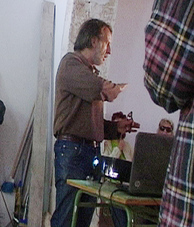 Presentation notes for the talk entitled "From Life to Death" given by Municipal archeologist Joaquim Bolufer on October 31st 2012.See also the previous summary report on this talk which includes links for further reading http://amuxabia.weebly.com/1/post/2012/11/from-life-to-death-evidence-and-funeral-rites-in-xbia.html 1. - The Cova Foradada. Remains of early humans that lived in this area. Evidence: 22 different fragments of at least two individuals, one adult and one immature. However, the only reliable contexts found are from level 2 Sector B:
2. - Burial caves of the end of the prehistoric age Cave of the Ravine of Rabosa Skull of an adult young man. Timeline uncertain. Presumably prehistoric (Chalcolithic, Bronze ¿?) Covetes of the Solana (sunny side) of the Montgó Burial caves of prehistoric chronology undetermined Montgo Cave Cave of multiple burials, probably of the Chalcolithic (Copper), with sufficient assets (all the remains come from “excavations” or "diggings" of Father Belda in the 1930’s) Recent study by Maria Paz de Miguel. Remains of at least 9 people: Skull of male mature adult (40-45 years), Skull of adult male (40 years), Skull of 9-10 years, Adult, + - 12, Adult, + - 7, + - 9, Male Adult?, Adult. Ivory pot. Funeral use?. Between 2nd and 1st millennium BC Cova del Barranc del Migdia Cave of multiple burials from the chalcolithic (Copper) The anthropological study material consists of 500 fragments of bones and teeth, the age of death doesn’t exceed 40 years of age for adult individuals, whereas infant death is placed between one and five years of age. So far, we have identified the remains of at least eight individuals collected in four packages. 2671 - 2256 years old - exact Carbon Dating, with grave goods. 3. - Iberian Culture Plana Justa Period with practice of cremation 4. - Romanization Inscription from la Riba The Muntanyar. The large Roman necropolis burial Punta de la Fontana. Sarcophagi. Marble plaque of the Dioscuri Past discoveries (tosqueros – tosca cutters, excavations in 1920’s-1930’s) Tombs discovered: 83 Rituals: graves dug on the rock, with two dominant orientations – east-west and north-south. The graves generally have a trapezoidal form. The funeral rites were always burial, placing the corpse in supine position inside the pit. In some cases shrouded corpses have been documented, it was usual to reuse graves with multiple burials. Only eight had artifacts or other items to accompany the deceased. In general, they were materials of minor importance, notably a perfume glass bottle, a possible bronze censer or other materials of ornament as a bracelet and a ring, also of bronze or a bead of vitreous paste. The Muntanyar was the great necropolis of the settlement of Punta del Arenal, which has about 900 graves on an area of approximately 6,000 m². Its extensive chronology embrace about 600 years, between the 1st and 6th centuries AD. Portitxol Island. Two graves covered with slabs that appeared, according J. Segarra Llamas (1947) at the highest and flattest part of the island, near a marble pavement. The graves contained human remains and some grave goods at the headboard, such as lamp and "several shiny objects". 5. - Islamization Changes in ritual and new beliefs. Orientation of tombs north to south and the head looking east. The corpses lying on their sides, on virgin soil, without ostentation.
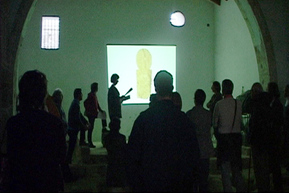 6. - The feudal Conquest Changes in rituals: In the villages, near churches, supine burials, east-west (to the west). Coffins and shrouds. Burial places: Graves in the Plaça and the Hospital and Churches (St. Bartholomew and Loreto) and convents. Tombs in the Graveyard of la Plaça: 29 graves, this was a trapeziodal space of 180 m² surrounded by a sturdy wall of formwork mortar lime and stone, in which the burials were made. A section of it is preserved under the floor of the tourist office, with more than twenty trenches dug into the natural soil with an east-west orientation. The burials were fmade in a supine position with the head pointing west. We have documented the use of shrouds on the corpses and the presence of boxes or coffins made of wood. The cemetery was in use during the fourteenth century and much fifteenth century until the extension of the church led to the remodeling the square and the destruction of the cemetery. 7. – Cemetery of San Juan (John) With new ideas of hygiene prevalent In Valencia, some institutions and individuals had tried to bring forward these new approaches. This is the case of early and progressive proposals made in 1776 by Pasqual Garcia, councilor of Valencia, who wanted to ban burials made within the walls of the city (M. Català, 2007). But it was not following the enactment of the "Real Pragmática" (a Royal decree) made by King Carlos III in 1787, the local authorities began to consider this problem. The "Pragmática" said that cemeteries are encouraged to build outside towns while the burial was prohibited in churches with a few exceptions. The same document also said : "...to take advantage of chapels of the cemeteries of the hermitages which already existed outside the villages....” an instruction which was followed in Xàbia, using the old Gothic chapel of St. John as a funeral chapel. Cemetery of Xàbia: 12 March 1817. Opened the current Sant Joan Cemetery, with the corpse of Burial of Ana Maria Moll daughter of Amaro and Teresa, according to death certificate signed by Fr Jose Cruañes Buigues Vicar. (BP). The old cemetery of Saint John was much smaller than that which we now know. That first site of 1817 occupied a very small area to the south of the chapel, with burials in the ground of which we have only a few panels of Valencia tiles that were conserved and placed inside the Hermitage. Of the thirteen panels recovered and restored by museum, the oldest dates back to 1823 and relates to people of high social and economic status: Mariana Prats, wife of the military governor of Dénia, died on May 28, and Jaume Catalá "Dr. in Theology and Rector of the Church of Xàbia” died on October 6. The most recent was dedicated to child Joaquim Fernando Garcia "... who died on 22 of February of the year 1862 with a tender age of 12 years and half ...". 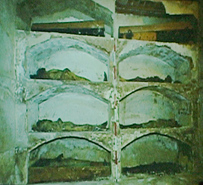 The lack of space of that first cemetery and high standing of certain persons, led to the section west of the chapel, between the last diaphragmatic arch (behind the altar) and the back wall of the chapel, to be turned into an ecclesiastical mausoleum. This structure, out of use since the late nineteenth century, had a single door (right / NE of the altar) that had recently been sealed off . 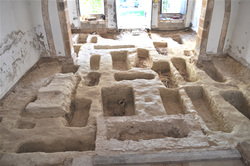 The interior was occupied by a total of 31 tombs of rectangular shape with maximum dimensions of 2.40 x 0.70 m. constructed of solid brick, plaster and pebble. Eighteen had a general orientation of: south west to north east, that rest against and overlap each other forming two levels. Meanwhile the tombs of the south east wall had a direction north west to south east perpendicular to the previous ones, grouping together and forming two rows of five tombs, plus three more which were placed during the last moments of use with this same orientation, on top of the first group of tombs. All graves with or without coffins corresponded to members of the clergy in Xàbia, probably vicars, and priests of St. Bartholomew parish, who were probably buried between 1817 and 1889, a date that was engraving on the fresh plaster of the tomb placed in the upper South group: “Here rested in peace / the mortal remains of / Vicar Don Jose Solano / from the Jabea Parish / died on 14 May 1889 / Pray to God for his soul. The poor conditions of the first cemetery area were described in the monumental " Diccionario Geográfico – Estadístico - Histórico de España y sus posesiones de Ultramar" (Geographic-statistical-historical dictionary of Spain and its overseas possessions written by Pascual Madoz (Volume IX, Madrid 1847): "... the cemetery, that is small and dreadful because its ruined walls permit the entry of foxes and other filthy animals which have eaten the limbs of the unburied corpses: its location so close to the town is detrimental to public health, mainly to the inhabitants of Convent quarter, who are very put out by the putrid stench that arrives during the summer when the west wind dominates and when days are hot: (the cemetery) should be moved to another healthy place...” Probably to try to mitigate this bad situation, but also to increase the space of the cemetery (Xàbia was a town with a growing population rose from 3,654 in 1843 to 5,785 in the year 1857), in 1849, the Mayor of Xàbia, Antonio Catalá bought three hanegadas of land (1 hanegada = 831 square meters) from Christopher Español to expand the cemetery (G. Cruañes, Efemérides, no. 289, 1986). With these works, the cemetery acquired the current dimensions and the first groups of niches were constructed (located on the west wall) aimed at the local bourgeois and other wealthy persons, while most of the burials would be made in the ground . But the widening of the cemetery and the improvement of its construction did not end the problem of excessive closeness to the town, causing, along with other factors, the mortality rate in the cnearby suburbs of Baix and Convent to be the highest in the town (A. Espinós, 1988). The years went by and the living conditions of the population were gradually improved, producing a reduction in the total deaths. However, the limited space of the cemetery compelled the construction of new blocks of niches. However, its excessive proximity to the town and population growth forced the construction of the new Catarroges cemetery, which opened in 1986, while the old cemetery was in use until 1989, when the last burial was held there. 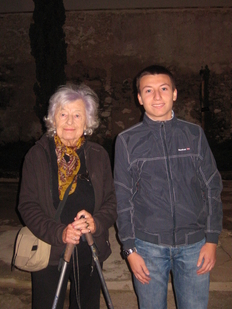 Nearly 70 years and five decades of history separates the youngest and oldest members of AMUX, 87-year old Claire Emery and 18-year old Edu Bisquert Buigues They are pictured here in Xàbia’s old cemetery after last week’s visit to the Ermita of San Juan. The event was attended by around 35 people of all ages and a wide range of nationalities too – British, German, French, Dutch as well as Spanish and Xabiencs. A summary of the presentation by municipal archaeologist Ximo Bolufer has been posted on the Blog for those who could not attend. Main points of a talk presented by Ximo Bolufer (Municipal Archaeologist) at the San Joan Ermita - Oct 31st 2012
Prehistory 1. The earliest dated human remains were found in the Cova Foradada (perforated cave - this is located on the Denia side of the Cap de San Antoni). Among fragments of foodstuffs were found bones of two people, one adult and one immature. They date from around 30,000 year ago. Several other caves contain burials from the end of the Stone Age (Neolithic). Cova del Barranc de la Rabosa - skull of a young man - probably copper (Chalcolithic) or bronze age (2000BC) Caves on the sunny side of the Montgó: a) Montgó cave (the Eye) - badly excavated in the 1930's - multiple burials probably from the copper age and the remains of a minimum of nine individuals. An ivory pot - possibly a funeral reliquary, was also found. (dated around 2000-1000 BC) b) Cova del Barrance del Migdía - recently excavated. Multiple, and successive burials i.e the bodies were first buried elsewhere, then some of their bones combined with the bones of others with grave goods and buried in the cave in "packets" For details see: http://xabia-museum-project.wikidot.com/wiki:9-the-barranc-del-migdia-cave-packages-of-individuals-a 2. Iberian (Iron Age) culture. The Iberians cremated their dead. Fragments of a ceramic urn - possibly for holding ashes were found among Iberian remains on the Plana Justa (Montgó) 7th-5th Centuries BC For details of the Plana Justa settlement see: http://xabia-museum-project.wikidot.com/wiki:case-no-5-the-iberian-treasure-of-xabia Details of the Plana Justa excavations (in Castellano) can be found on. http://ojs.uv.es/index.php/saguntum/article/view/1915/1424 3. Roman Period a) A sarcophagus : on the canal de la Fontana point (Arenal) - in the Minister's House near the Parador b) Tombstone inscriptions c) The Muntanyar Necropolis - 900 tombs in 6000m2 (now underneath buildings near the Sol y Mar hotel) In use during the 1st-7th Centuries AD. For details see: http://xabia-museum-project.wikidot.com/wiki:case-no-8-the-necropolis-of-muntayar 4. Islamic (Moorish) period: Four cemeteries known: Rebaldi, Atzúbia, Cap Marti and Cansalades. Bodies oriented north/south, but lying on their sides facing east. Two of the 45 funeral arabic inscriptions known in the Comunidad Valenciana are from Xàbia (10th or early 11th Centuries AD) For details see: http://xabia-museum-project.wikidot.com/wiki:first-floor-andalusian-cemeteries-in-xabia 5. The Feudal (Christian) conquest Heralded a change in rituals. In the villages and near churches burials were oriented east/west, with the head to the west. Bodies were in a supine position with arms across the abdomen. Cemeteries: (The town square and hospital); Churches: (Sant Bartomeu and Loreto) and convents. Town square: near and under Tourism office: 29 graves, in a space delimited by a wall. Parts still visible under glass in the Tourism office. Dated: 14th-15th Century 6. Cemetery of San Joan Established after 1776 when Valencia prohibited burials within Town walls. (English version of text from: http://www.elperiodic.com/xabia/noticias/92832_excavaciones-ermita-sant-joan-sacan-tumbas-siglo.html 28/10/10 - Las excavaciones en la ermita de Sant Joan sacan a la luz 30 tumbas del siglo XIX ) Excavations at the hermitage of Sant Joan bring to light 30 nineteenth century graves The Municipal Museum of Archaeology and Ethnography (Soler Blasco) of Xàbia has conducted an archaeological dig inside the hermitage of Sant Joan, adjacent to the old cemetery. The construction of the nearby cemetery in 1817, converted the chapel into a funeral chapel, a function which it held until the 1980's The excavation aimed to study the possible structures preserved in the subsurface of the chapel and to try to determine its date, in addition to recovering this interesting municipally owned building so that it could be known and visited in the future. The archaeological works documented an important set of 30 more or less rectangular tombs, carved into the natural "gleba"soil. Twenty-seven kept an east-west orientation (with head pointing east, except for two, which were located west), and only three were oriented north-south. Most burials were performed in coffins, with bodies in a supine position, and arms folded over the chest or abdomen, except for some of the children, whose arms were bent with the hands beneath the face, in a sleeping position. Of the thirty graves found, nineteen belonged to adults, and the remaining eleven burials were children. Six were empty, while the rest belonged to four adult males aged between 40 and 70, six women between 20 and 65, and three individuals for whom it was not possible to determine the sex because of the poor state of preservation. The children buried have been identified as being between 1 and 2 months and 5 or 6 years old. Most were buried between 1817 and 1849, when the cemetery was expanded becoming about the current size. Archaeological intervention has affected virtually the entire inner surface of the rectangular building which is 14 meters long and 7.30 meters wide, with a single nave divided into three regular sections about 4.25 meters long. The hermitage of Sant Joan was originally a building for religious use on the outskirts of Javea, at the junction of the roads leading out of the village towards Pedreguer, Denia, Gata and Poblenou. This building is a clear and interesting example of those known as "chapels of conquest", buildings with a single nave supported by diaphragm arches. In this case, there are two arches (one covered and re-converted into an arch in the middle of the nineteenth century) that divide the rectangular space of the chapel into three regular sections. There is not much documentation about Sant Joan and the oldest known story is from the mid-seventeenth century, when it seems that it was used as an auction room, or "Almudí" of the town. Thanks to the Book of Sacristan of Xàbia Parish, written in 1769, we know it was used for religious purposes at least on the day of Saint John the Evangelist (December 27), "... ..Finished high Mass the Clergy will sing a Mass at the Hermitage of San Juan ... ", and the day of Saint John the Baptist (June 24)" ... John the Baptist Day, this day Clergy to sing a Mass at his hermitage ...... " This excavation has been possible thanks to the participation of the EMCORP program which enabled the hiring of an archaeologist. Also participating were the municipal works and the local topogrpahica department. The anthropological study was conducted by Dr. Francisco Gómez Bellard. From 2010 Press Release. |
ACTIVITIES
Categories |
- Home
- Blogs
-
Projectes
- Premio de Investigación - Formularios de Inscripción
-
Traducciones Translations
>
-
DISPLAY PANELS - GROUND FLOOR
>
- THE STONE AGES - PALAEOLITHIC, EPIPALAEOLITHIC AND NEOLITHIC
- CAVE PAINTINGS (ARTE RUPESTRE)
- CHALCOLITHIC (Copper) & BRONZE AGES
- THE IBERIAN CULTURE (THE IRON AGE)
- THE IBERIAN TREASURE OF XÀBIA
- THE ROMAN SETTLEMENTS OF XÀBIA
- THE ROMAN SITE AT PUNTA DE L'ARENAL
- THE MUNTANYAR NECROPOLIS
- ARCHITECTURAL DECORATIONS OF THE PUNTA DE L'ARENAL
- THE ATZÚBIA SITE
- THE MINYANA SMITHY
- Translations archive
- Quaderns: Versión castellana >
- Quaderns: English versions >
-
DISPLAY PANELS - GROUND FLOOR
>
- Catálogo de castillos regionales >
- Exposició - Castells Andalusins >
- Exposición - Castillos Andalusíes >
- Exhibition - Islamic castles >
- Sylvia A. Schofield - Libros donados
- Mejorar la entrada/improve the entrance >
-
Historia y enlaces
-
Historía de Xàbia
>
- Els papers de l'arxiu, Xàbia / los papeles del archivo
- La Cova del Barranc del Migdia
- El Vell Cementeri de Xàbia
- El Torpedinament del Vapor Germanine
- El Saladar i les Salines
- La Telegrafía y la Casa de Cable
- Pescadores de Xàbia
- La Caseta de Biot
- Castell de la Granadella
- La Guerra Civil / the Spanish civil war >
- History of Xàbia (English articles) >
- Charlas y excursiones / talks and excursions >
- Investigacions del museu - Museum investigations
- Enllaços
- Enlaces
- Links
-
Historía de Xàbia
>
- Social media
- Visitas virtuales
- Tenda Tienda Shop

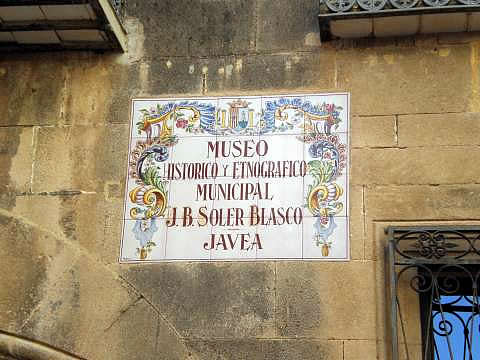
 RSS Feed
RSS Feed
